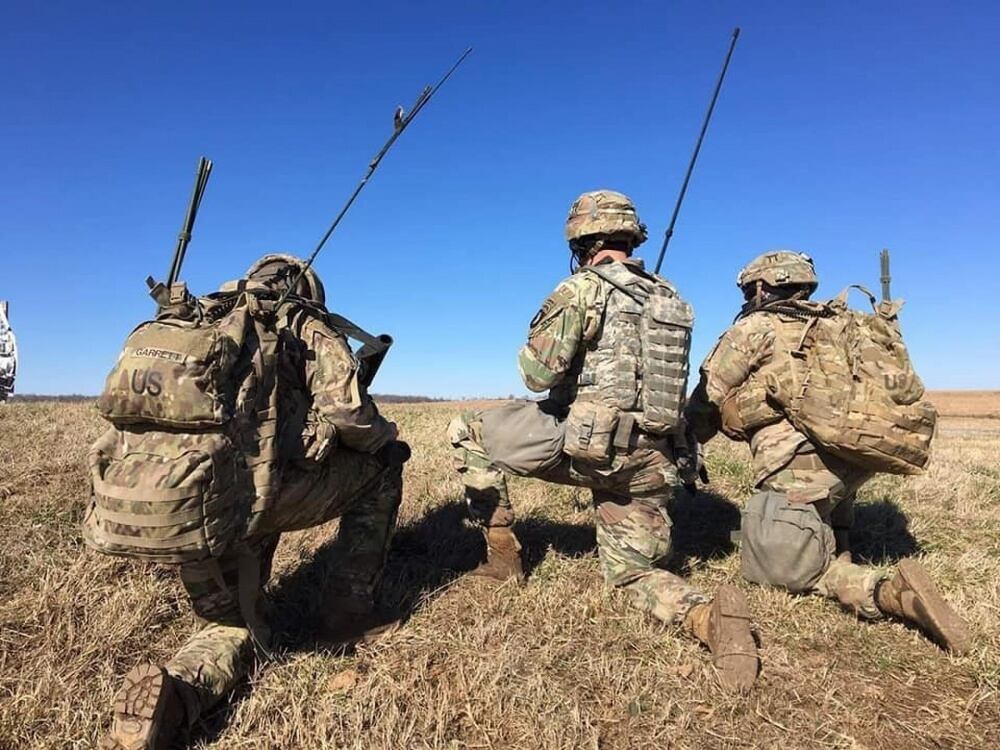A new, more realistic verification process will help the Army work out software bugs and hitches in networking equipment it fields.
In the past, such verification and validation processes, as they’re called, would be executed mostly in a lab with virtualized equipment. Now, however, the Army is taking the extra step of bringing all the gear out of the lab and actually testing it live.
“Essentially, we take the actual set of equipment that we’re going to give to the unit and we stand up the network. Nothing is virtualized, it’s not server stacks — we have everything radiating, everything turned on just like the unit would have it with their actual equipment,” Capt. Jonathon Dodge, assistant product manager in program manager tactical radios within Program Executive Office Command, Control, Communications-Tactical, told C4ISRNET during a September trip to Fort Bragg, North Carolina.
At the time, the Army was testing equipment to be delivered to the 1st Infantry Brigade Combat Team/82nd Airborne Division, located at Fort Bragg, which will be the first full brigade to test the integrated tactical network, or ITN, that the Army intends to field in 2021.
RELATED

This in-person verification and validation process began when the Army started fielding portions of the ITN to a security force assistance brigade last year.
The service tests and runs every piece of equipment in a live network that will be fielded, from tactical radios to end-user devices — essentially Android devices providing soldiers in the field a common operational picture — to command post tools at the battalion and brigade level.
Dodge said this is important because it serves as a last-minute check to make sure everything is running properly. Plus, under the previously lab-only testing, when the unit received equipment, it was the first time that gear was turned on and used.
It’s also critical because “as we’re injecting more COTS [commercial off-the-shelf] items into the network, it makes it even more important we do it because we’re trying to change things rapidly; that requires us to change how we verify things,” Dodge said. “When we’re introducing new stuff, this allows us to bring it in here before we give it to them and make sure that new COTS item doesn’t mess anything else up in the network with a live network as opposed to just a lab, server, virtualized environment.”
If they find any issues such as software bugs, they’ll push that back to the lab for a software patch. This also saves time because if the Army just delivered the equipment to a unit before conducting live tests, all the soldier would know is the radio doesn’t work. The crew testing the equipment actually has the expertise to know why it’s not working and fix it before it gets to the unit, Dodge said.
“The reason why we’re doing it here [at Fort Bragg] is because production is often so tight that we’ve got to get it here locally just before fielding, so we’ve got to do it local where the unit’s at with the equipment that’s arriving off production line, turn it on, make sure it all works, apply the latest software patch to it, then give it to them,” Dodge added. “It’s kind of a different way of doing it rather than having time to do everything slow with the depot. This is a lot faster paced than it used to be. It’s working very well.”
The live tests serve another critical role for the Army as it looks to deliver its first set of modernized network equipment in 2021. Electronic Proving Ground “is using this as an opportunity for them to validate their own instrumentation,” Dodge said. EPG serves as the Army’s technology developmental tester.
“They bring it out here to set it up and see how much data they can collect on it; they’ll make adjustments to their instrumentation so they can capture whatever quantifiable data, which essentially you’re talking about packets,” Dodge said.
As part of making fielding decisions on certain equipment — and understanding the risk involved in each set of equipment — EPG’s role under the Army’s test and evaluation strategy for the ITN is to conduct technical tests and instrumentation for verification and validation that will support instrumentation accreditation, according to an Army document.
By jumping in early in the process, EPG can calibrate its instruments and contribute in an ongoing manner to the Army’s continuous feedback loop involving multiple real-world exercises, deployments and lab-based tests to help inform decisions regarding the ITN.
Mark Pomerleau is a reporter for C4ISRNET, covering information warfare and cyberspace.








